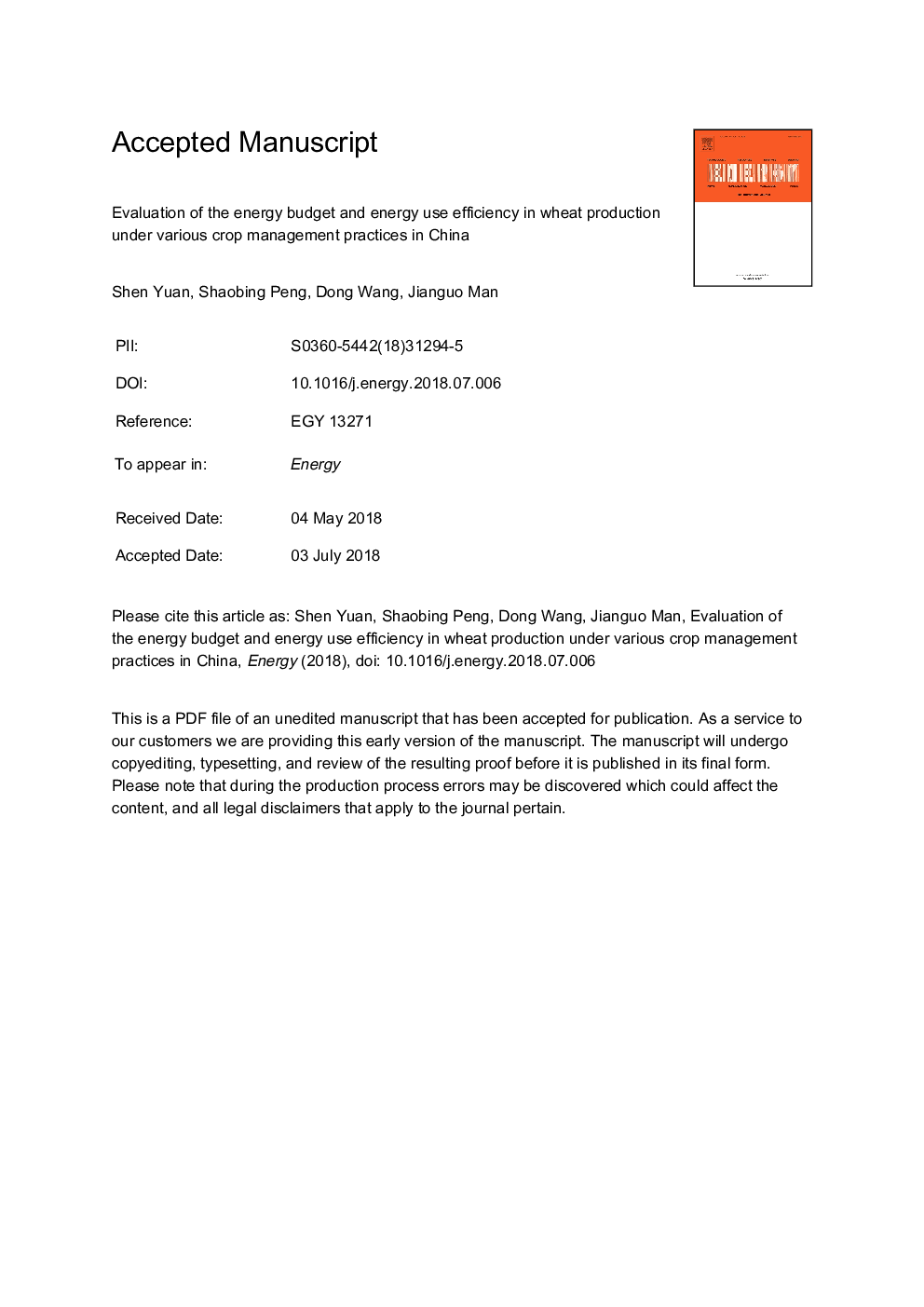| Article ID | Journal | Published Year | Pages | File Type |
|---|---|---|---|---|
| 8070944 | Energy | 2018 | 36 Pages |
Abstract
Developing energy-saving and high-efficiency crop managements is required for food and energy security. Huang-Huai-Hai Plain produces more than 60% of the wheat in China. However, no published studies have investigated the energy budget of wheat production in this area. Using an input-output energy analysis from 2012 to 2014, we assessed energy flow of various managements. The average energy input and output ranged from 37.5 to 57.4 and 170.9-263.9â¯GJâ¯haâ1, respectively. Compared with rainfed wheat (W1), irrigated wheat presented significantly higher energy inputs and outputs. Compared with farmers' practices (W2), optimized management based on soil water content (SWC) at depths of 0-20 (W3) and 0-40â¯cm (W4) reduced energy use; however, this reduction did not occur at soil depths of 0-60â¯cm (W5). Among four irrigated managements, W4 produced the highest energy output with the lowest energy input. Moreover, W4 presented the highest net energy, energy use efficiency, and energy productivity, which were 8.2%, 15.6%, and 14.9% higher than those presented by W2, respectively. The lowest specific energy in W4 indicated that the energy consumed to produce 1â¯kg of wheat can be substantially reduced via efficient water management. SWC-based water management had a significant positive effect on energy-related factors without sacrificing crop productivity.
Related Topics
Physical Sciences and Engineering
Energy
Energy (General)
Authors
Shen Yuan, Shaobing Peng, Dong Wang, Jianguo Man,
